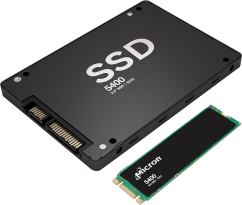VR, AR, MR & XR
VR, AR, MR, and XR are terms related to immersive technologies that enhance or alter our perception of reality through digital means.
· VR (Virtual Reality):
Virtual Reality refers to a computer-generated environment that simulates a physical presence in a real or imagined world. Users typically experience VR through head-mounted displays (HMDs) that completely immerse them in the virtual environment. VR aims to create a sense of presence and interaction within this digital realm, often used for gaming, training simulations, virtual tours, and more.
· AR (Augmented Reality):
Augmented Reality overlays digital information or virtual objects onto the real-world environment. Unlike VR, AR does not replace the real world but enhances it by adding computer-generated elements that users can interact with. AR applications are often viewed through smartphone or tablet screens or through AR glasses. Examples include AR games, navigation apps that overlay directions on streets, and applications in education and industrial training.
· MR (Mixed Reality):
Mixed Reality combines elements of both VR and AR to create environments where physical and digital objects coexist and interact in real-time. MR integrates digital content into the user's physical surroundings, allowing users to interact with virtual objects while maintaining awareness of the real world. MR devices, such as Microsoft HoloLens, enable users to manipulate virtual objects that appear to exist in the same space as physical objects.
· XR (Extended Reality):
Extended Reality is an umbrella term that encompasses all immersive technologies, including VR, AR, and MR. XR refers to the spectrum of environments that combine real and virtual elements, ranging from entirely virtual environments (VR) to environments where virtual and physical objects interact (MR). XR highlights the continuum of immersive experiences that alter or enhance our perception of reality through digital means.
---------------------
These technologies are rapidly evolving and finding applications across various industries, including gaming, entertainment, education, healthcare, architecture, and industrial training, among others. They rely on a variety of electronic components to create immersive experiences.
1.Displays:
· VR Headsets: Use high-resolution OLED or LCD displays to present stereoscopic images to each eye, creating a 3D virtual environment.
· AR Glasses: Incorporate transparent displays (e.g., waveguides) or projection-based systems to overlay digital content onto the user's view of the real world.
· MR Devices: Combine displays that can show both real-world views and virtual content simultaneously, often utilizing advanced optics and beam-splitting technologies.
2.Sensors:
· Accelerometers and Gyroscopes: Measure head movements and orientation to update the user's view in real-time, crucial for maintaining immersion and reducing motion sickness in VR.
· Cameras: Capture real-world scenes for AR applications, enabling object recognition, spatial mapping, and interaction with physical objects.
· Depth Sensors: Provide depth perception for AR and MR applications, allowing virtual objects to interact realistically with the real world.
3.Processors:
· Graphics Processing Units (GPUs): Render complex 3D graphics and maintain high frame rates essential for smooth VR experiences.
· Central Processing Units (CPUs): Handle the overall processing tasks, including tracking data from sensors, managing input/output, and running applications.
4.Memory:
· RAM (Random Access Memory): Store temporary data and application states to ensure smooth and responsive performance.
· Storage (e.g., SSDs): Store VR/AR applications, environments, and user data.
5.Input Devices:
· Motion Controllers: Enable users to interact with virtual environments by tracking hand movements and gestures.
· Haptic Feedback Devices: Provide tactile sensations to enhance immersion by simulating touch and physical interaction with virtual objects.
6.Networking Components:
· Wireless Connectivity: Enable VR/AR devices to communicate with other devices, networks, or the cloud for multiplayer gaming, content streaming, and remote collaboration.
7.Power Management:
· Battery Systems: Provide portable power for wireless VR/AR devices, ensuring sufficient runtime for extended use.
· Power Management ICs: Regulate and optimize power consumption to maximize battery life and device performance.
8.Audio Components:
· Headphones or Spatial Audio Systems: Deliver immersive audio cues and spatial sound to enhance the sense of presence in virtual environments.
9.Environmental Sensors:
· Temperature and Humidity Sensors: Monitor environmental conditions to ensure user comfort and device performance during prolonged use.
10.Optical Components:
· Lenses and Optics: Focus and magnify images in VR/AR/MR displays, correcting for distortion and enhancing visual clarity.
· Waveguides (for AR glasses): Direct and reflect light to overlay digital content onto the user's view of the real world.






